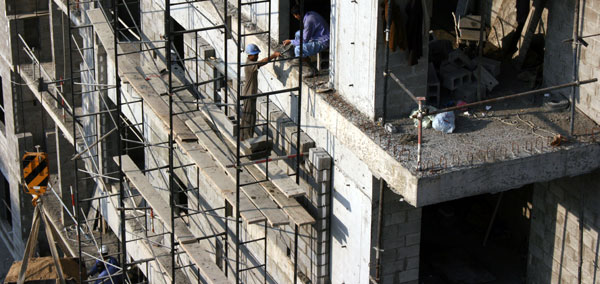Middle East construction firms must invest more in safety, says industry expert.
 Other News
Other News Subscribe to newsletter
Subscribe to newsletter
| 3 Dec 2007 |
The booming Middle East construction industry needs to invest more in safety to prevent fatal accidents and injuries, and save money as well as lives, an industry expert says.
Paul Redstone, Regional Operations Manager, Middle East, for Bovis Lend Lease, said that construction companies and workers must share the responsibility to make building sites safer.
Redstone, who addressed one of the seminars during last week’s Big 5 PMV exhibition at Airport Expo Dubai, highlighted the Build Safe Dubai initiative now being driven by a group of like-minded consultants and contractors to try and champion change, share best practice and set an example about what can be achieved in terms of building safely.
“We feel that there are actually good regulations here, it's just that it's such a saturated construction market,” he said. “It's almost unfeasible to actually have the government bodies enforce it. It's the responsibility of all project stakeholders, and workers, to create safe environments on their projects.
“This is not as simple as it sounds, so we talk to the contractors who are facing challenges to share best practice with them. We also try to reinforce to clients that it really is worthwhile to enforce safety. The experience of the biggest contractors in this group is that safety saves time and money on a project overall. So we are trying to get that message across.”

Redstone said the impact of poor safety measures varies from project to project. “We had a study done which looked at fatalities globally,” he said. “It's hard to compare places, as fatalities in different parts of the world have different costs associated with them. But once you stop work on a project, by the hour it can cost tens to hundreds to thousands of dollars, depending on the size of the project.
“In one specific project it was estimated that if one worker dies on site, and that site stops for 12 hours, along with the investigations that follow on, it could cost the project at least US$816,877; and it was not a particularly large project.
“If you have an accident, a great deal of executive time goes into investigations, court cases and compensation, and there are so many smaller elements that take time and money.”
Redstone says a wide range of factors contribute to accidents on building sites in this region. “The major physical cause relates to falls of people or materials from height,” he explained. “Also, many workers don't have sufficient awareness of the seriousness of the risks that face them every day.
”Many labourers are from backgrounds that aren't connected to construction and are put into construction positions because the supply of really skilled labour just cannot meet the demands here. Dubai standards are actually improving at a faster rate than the West improved their safety standards from, say, the 1950s through to the 1990s, but there is still a perception that, ‘this is how we used to do it and that is still okay”
Redstone added: “There is a clear focus on health and safety from government level that needs to cascade through the supply chain. Regulators have pushed a change and we are waiting to see just exactly what that change holds. We want to be part of this change and this is how we're going to give it a try.
“My expectation is that we can get companies across the industry involved and create a real awareness of the importance of health and safety.
“We have a member's charter that states that each signatory organisation believes that every worker has the right to an injury-free work place, and all stakeholders will work together to ensure local safety regulations are followed.”




